2022 Update
In spite of its dramatic setting, when it comes to rummaging around abandoned places, the decommissioned, and once top-secret, Hara Submarine Base is a fairly tame experience. Unless you have access to a boat, you’re limited to the section of the base that is connected to the mainland (about 10% of it). There is even a small plaque near the entrance informing would-be visitors that they enter at their own risk and no responsibility is accepted in the event of an accident (*). This is fair enough in my opinion, and I wish more places of a similar ilk would have a similar notice – if nothing else, it’s telling you it’s OK to enter but it’s your problem if something goes wrong!
(*) I later found out that the base belongs to/is managed by an organisation called Hara Sadam. Their aim is to renovate/upgrade the harbour and make it suitable for small boats. Estonian law dictates that they are responsible for the safety of visitors and that is why the notice has been erected. Interestingly, another goal of Hara Sadam is that they want to establish a former military ship in the bay as a place of interest that can be visited, but more on that later.
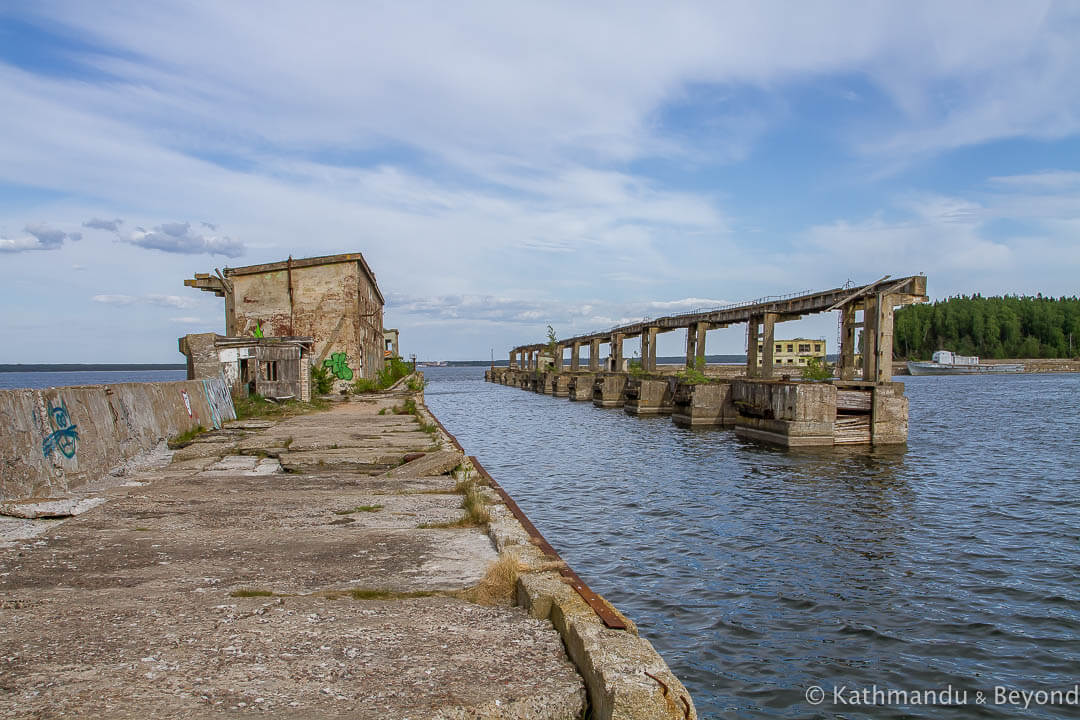
As for the submarine base itself, it was established by the Russian military in September 1953 and issued with the catchy title of Military unit No. 53083. Approximately 65km east of Tallinn, it sits on Estonia’s Juminda Peninsula, which is part of what is now Lahemaa National Park (est.1971) and, as the crow flies, is positioned almost directly opposite Helsinki, on the other side of the Gulf of Finland. The distance is just 75km.
Like most Soviet bases in the Baltic States, Hara was constructed in the middle of nowhere and well away from civilisation. Any indigenous inhabitants were swiftly relocated which, in the case of Hara, involved villagers from around five nearby settlements being moved away.
At the height of the Cold War, hundreds of personnel worked at the facility and it was one of only a handful throughout the entire USSR sophisticated enough to carry out the complicated procedure of submarine demagnetisation, officially known as degaussing (*).
(*) Yep, I had to look it up too! In brief, the hulls of submarines and warships acquire a magnetic field over time which, in turn, makes them easier to detect on a radar. Giving the hull a good dose of degaussing every now and then obviously makes them less vulnerable. I was bloody awful at physics at school, so if you want anything more advanced than my child-like explanation then take a look at the following link: Why are submarines demagnetized?
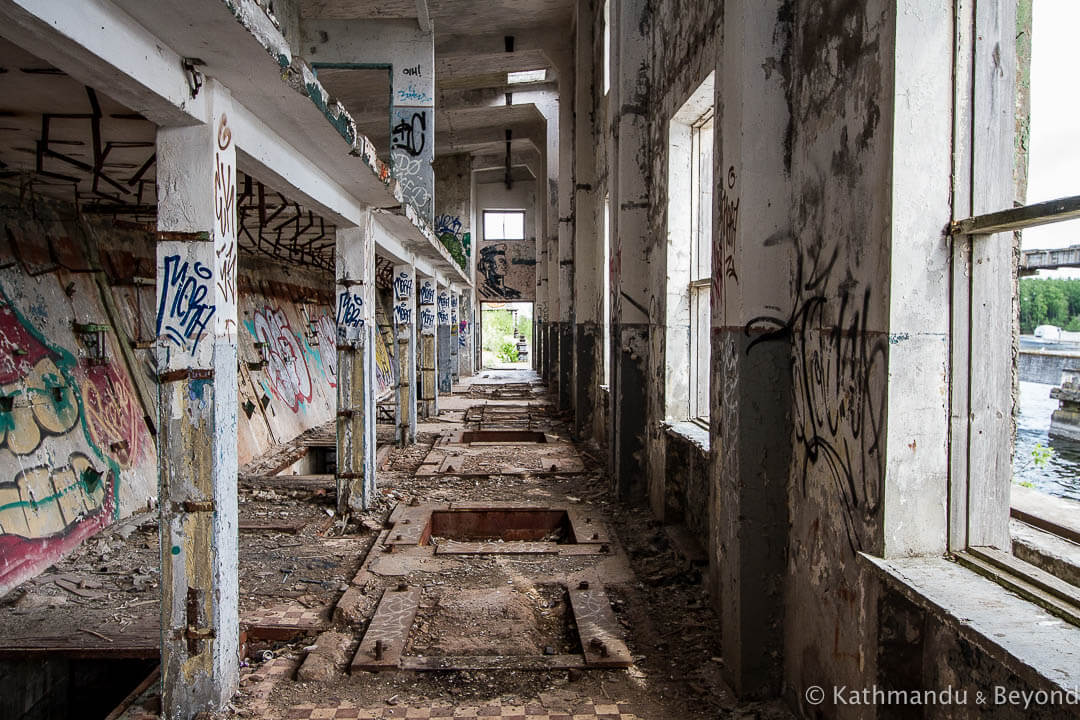

Military unit No. 53083 remained operational until the dissolution of the Soviet Union in late 1991. During this chaotic time, the Russians left the base post-haste taking anything of value or importance with them, and leaving a concrete foundation which was then subsequently pillaged by those looking for anything that could be re-used or turned into cash (scrap metal etc.). For much of the following two decades, the ex-Soviet base remained a relative secret, even to those living close by. However, in recent years it has attracted the attention of urban explorers (and graffiti artists!) and even more recently, the Survey of the Estonian Heritage Society who declared the site “a unique military facility on both the Estonian and global scale” earlier this year (2018). Source: Hara Sadam.
This information, coupled with that above about Hara Sadam, would imply that the ultimate intention is to turn this Soviet-era military relic into a heritage site. If this is the objective then it is a fantastic one in my opinion. Not only is the setting lovely (which was often the case with many of these places because of their remoteness) but it’s good to see more recent historic structures in countries of the former Soviet Union being preserved rather than torn down, which is a far more common occurrence these days. I suspect there are many who disagree with my perspective but it is interesting to note that there are those from the region who do see the benefits of conserving such places. The above source goes on to say, “In the opinion of heritage conservationists, objects of Soviet occupation are of particular interest to foreign tourists and the potential for military tourism is high. The tourism potential can also be (seen in) objects that seem useless to us as Estonians and locals.”
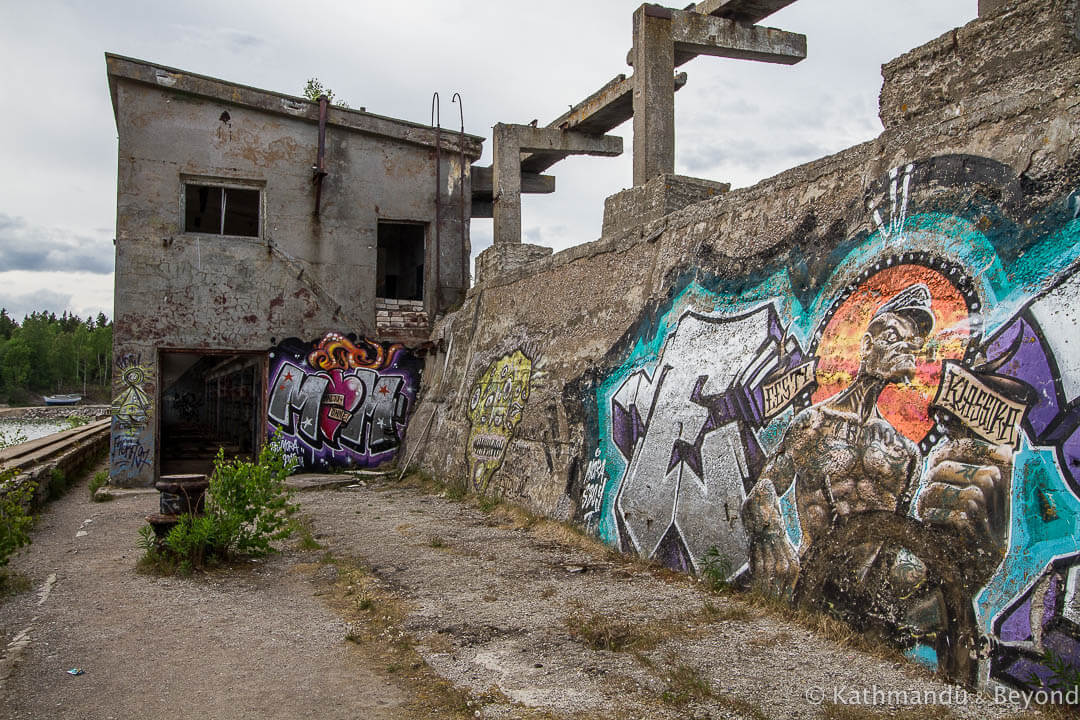
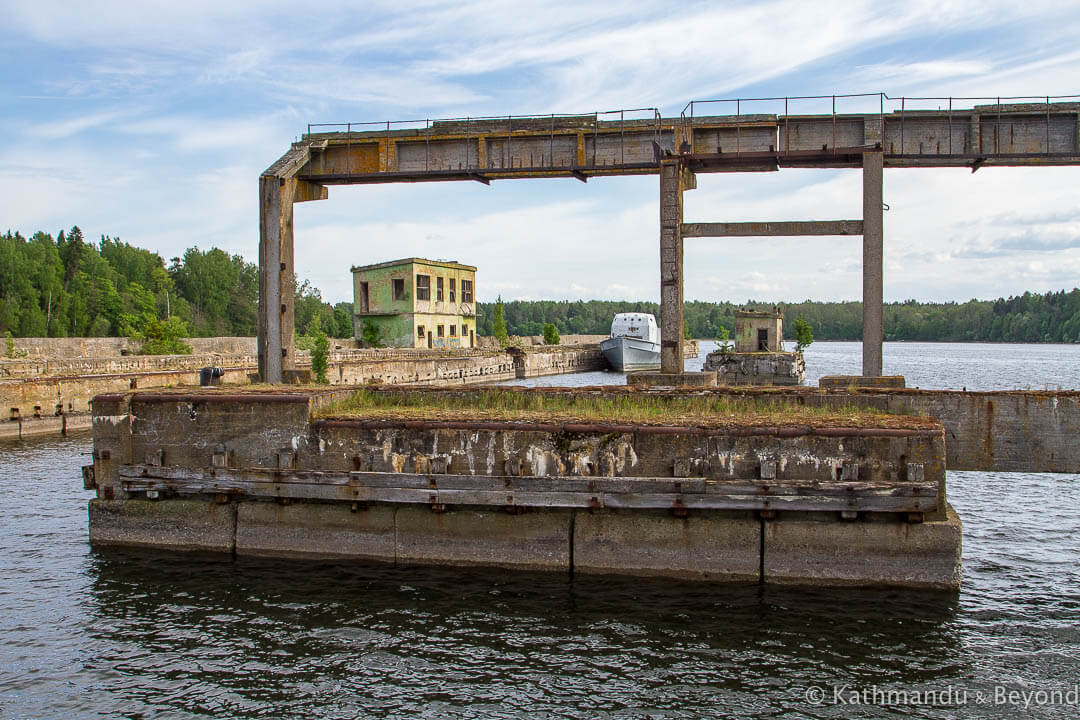
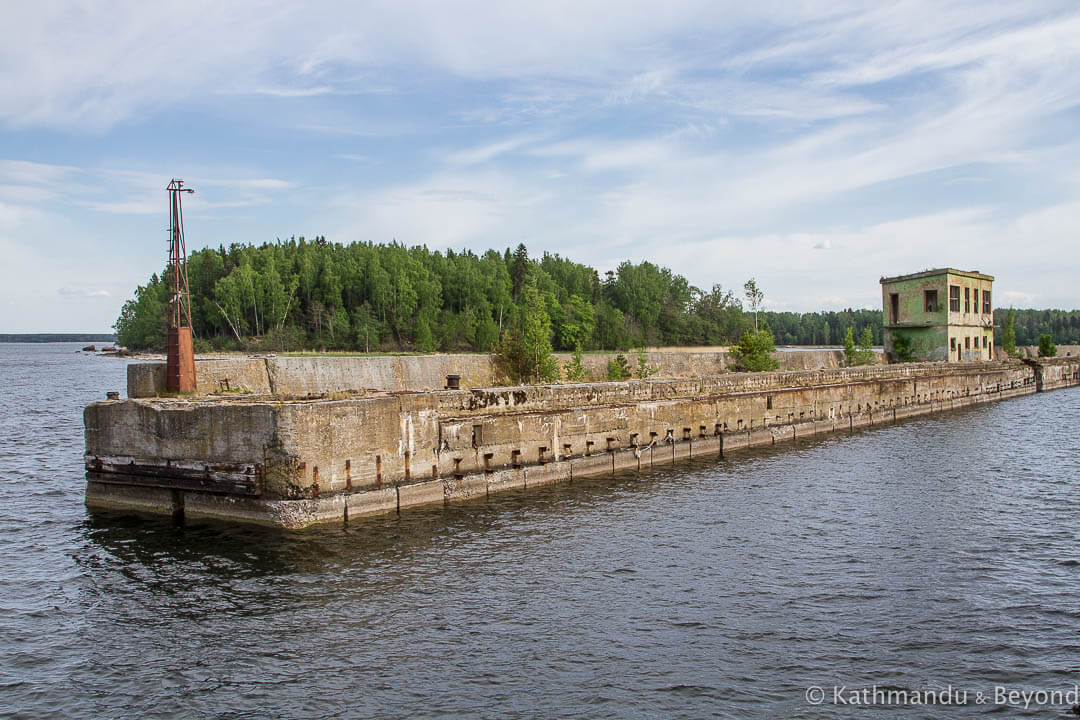
Although for us personally, visiting Hara Submarine Base didn’t provide the usual adrenaline rush we often experience when exploring an abandoned location, we did both enjoy the place and would recommend it to others. Kirsty, in particular, liked the street art that now adorns much of the structure and, with a little imagination, it was easy to envisage what Hara would have been like as a top-secret, fully operational submarine pen at the peak of the Cold War.
We spent about forty minutes looking around and, on the way back to the car, we spotted a few other buildings in the woodland just off the main track worthy of a closer inspection. We presumed they were barracks and other facilities associated with the base.
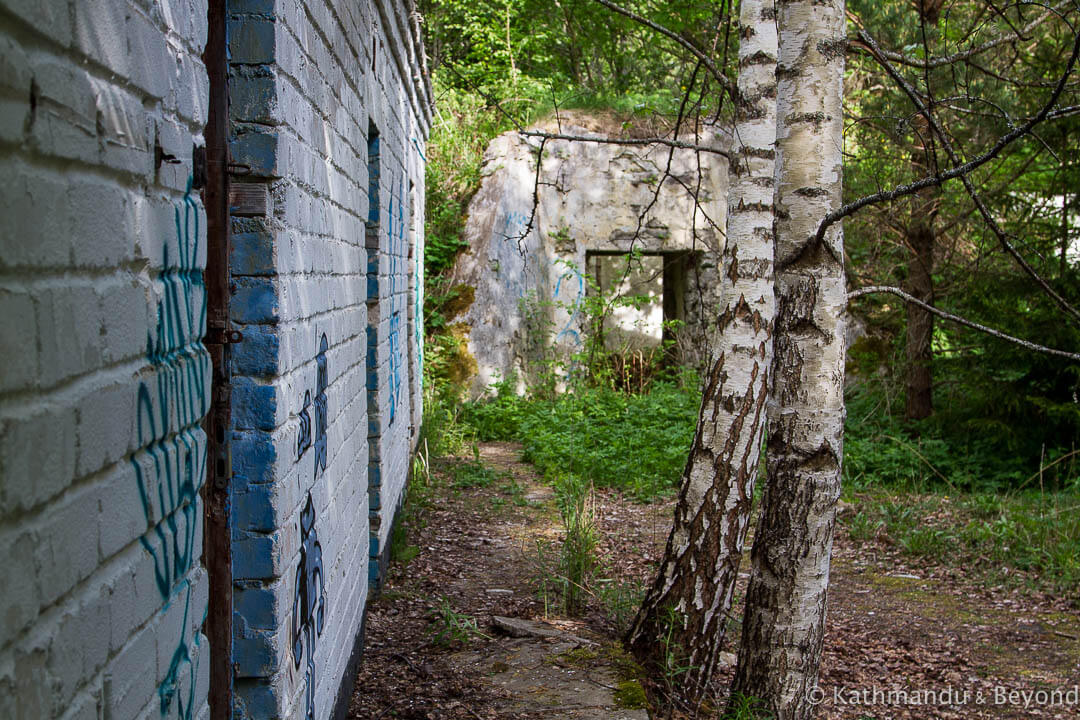
How to get to Hara Submarine Base
Hara Submarine Base is best reached with your own transport. Officially, you are not allowed to enter the harbour area by vehicle without prior permission. There are plenty of signs to this effect and we adhered to them. Instead, we parked 1.3km away at the entrance to the dirt track (marked on the map) and walked from there. If you don’t want to walk the final stretch, use either of the following contacts to obtain permission to drive all the way in or chance your luck and do so anyway.
E-mail: [email protected]
Phone: port service representative Reet Idavain (+372) 50 96 980
It is possible to get from Tallinn to Hara Submarine Base by public bus but it is time-consuming and the buses aren’t that frequent. Bus #154/156 leaves from Tallinn’s main bus station (Bussijaam), takes 1.5 hours in each direction and costs €3 each way. The bus schedule seems to vary depending on the day of the week and the bus drops you off at the same spot as where you need to park the car.
It is also possible to join a tour. Contacting the Estonian Tourist Board is probably a good place to start.
Where to stay near Hara Submarine Base
We were on a Baltic States road trip and so didn’t spend the night close by but if you want to, the attractive-looking Projekt-Kodu Eco-Hostel set inside Lahemaa National Park and only 6.5km from the base, seems like a good place to stay. Bicycles are available for free. Hara Sadam also lists some accommodation options including camping and glamping at what they describe as a romantic campsite with a sea view.
Entrance fee for Hara Submarine Base
We didn’t have to pay anything to enter Hara Submarine Base but apparently, there is a €5 per person entrance fee. We were there in May 2018 and it’s possible that this fee only came into force after this time or that it is only collected in summer. Either way, you should be prepared to pay it if you decide to visit.
READ MORE BLOG POSTS ABOUT ABANDONED PLACES
READ MORE BLOG POSTS FEATURING THE BALTIC STATES
INSPIRED TO VISIT HARA SUBMARINE BASE? WHY NOT PIN THIS POST FOR LATER?

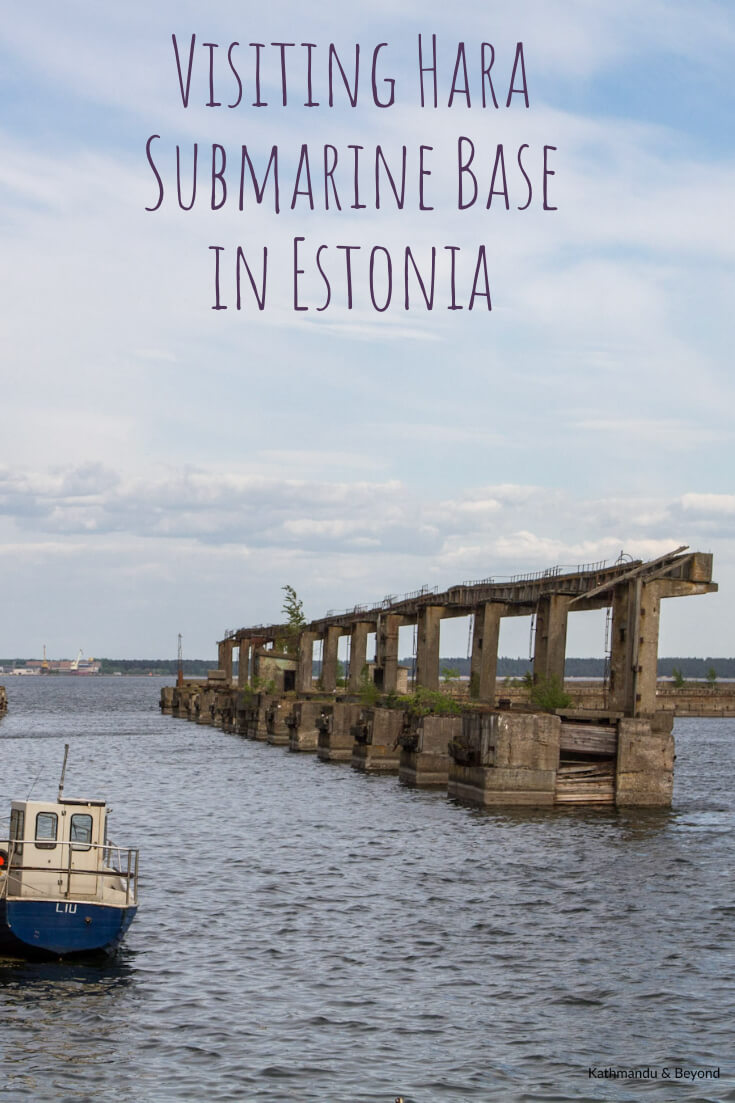


Like you, I value preserving history and heritage, but I was intrigued to hear the other side of the argument. I have lived in historic homes that were not kept up and were beyond saving, so I do see a different part of the story, but most of the time I think it’s important to value history and heritage.
Thanks for your comments and you are right, it is interesting to see a different perspective. The three Baltic States are the only countries I’ve come across within the former Soviet Union that see some value in preserving their Soviet heritage. I can see why, for the best part, many people who had memories of that time, don’t value it in the slightest but there are plenty of outsiders that do find the legacy interesting (us included). The Latvian tourist board even promote their Soviet (mostly architectural) legacy on their website (https://www.latvia.travel/en/article/soviet-legacy).
thanks for sharing these places; we made a perfect motorcycle adventure following some of your footsteps in baltics, and digged most the hara subs base, daugavpils fortresses and the missile base in latvija. keep on travelling and blogging!!!
Excellent, I’m glad the posts came in handy! Seeing the Baltics on a motorcycle must be better than in a car because you can take some of the less-developed roads that would have been a bit dodgy for us to travel on!